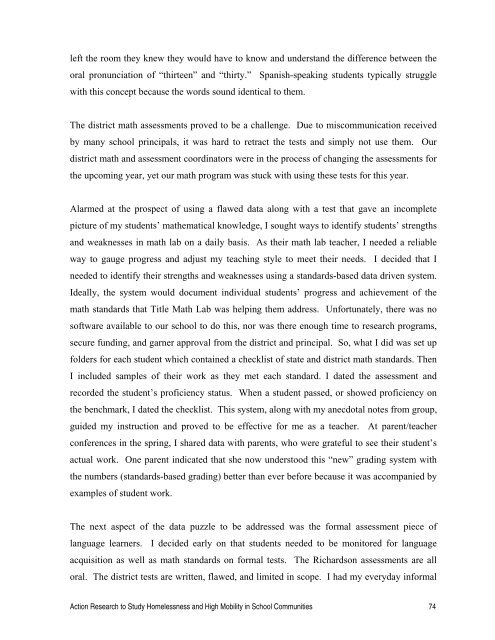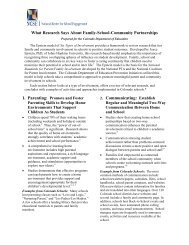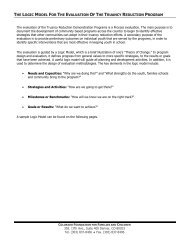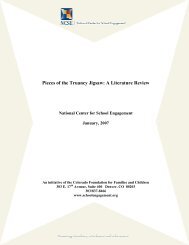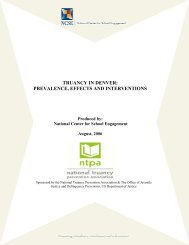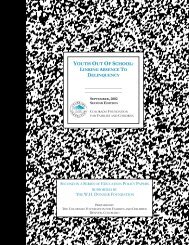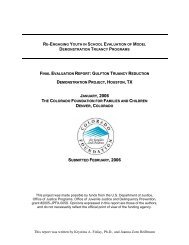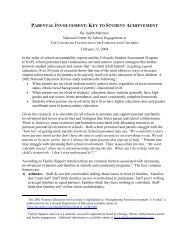Section 1: Academic Achievement - National Center for School ...
Section 1: Academic Achievement - National Center for School ...
Section 1: Academic Achievement - National Center for School ...
Create successful ePaper yourself
Turn your PDF publications into a flip-book with our unique Google optimized e-Paper software.
left the room they knew they would have to know and understand the difference between the<br />
oral pronunciation of “thirteen” and “thirty.” Spanish-speaking students typically struggle<br />
with this concept because the words sound identical to them.<br />
The district math assessments proved to be a challenge. Due to miscommunication received<br />
by many school principals, it was hard to retract the tests and simply not use them. Our<br />
district math and assessment coordinators were in the process of changing the assessments <strong>for</strong><br />
the upcoming year, yet our math program was stuck with using these tests <strong>for</strong> this year.<br />
Alarmed at the prospect of using a flawed data along with a test that gave an incomplete<br />
picture of my students’ mathematical knowledge, I sought ways to identify students’ strengths<br />
and weaknesses in math lab on a daily basis. As their math lab teacher, I needed a reliable<br />
way to gauge progress and adjust my teaching style to meet their needs. I decided that I<br />
needed to identify their strengths and weaknesses using a standards-based data driven system.<br />
Ideally, the system would document individual students’ progress and achievement of the<br />
math standards that Title Math Lab was helping them address. Un<strong>for</strong>tunately, there was no<br />
software available to our school to do this, nor was there enough time to research programs,<br />
secure funding, and garner approval from the district and principal. So, what I did was set up<br />
folders <strong>for</strong> each student which contained a checklist of state and district math standards. Then<br />
I included samples of their work as they met each standard. I dated the assessment and<br />
recorded the student’s proficiency status. When a student passed, or showed proficiency on<br />
the benchmark, I dated the checklist. This system, along with my anecdotal notes from group,<br />
guided my instruction and proved to be effective <strong>for</strong> me as a teacher. At parent/teacher<br />
conferences in the spring, I shared data with parents, who were grateful to see their student’s<br />
actual work. One parent indicated that she now understood this “new” grading system with<br />
the numbers (standards-based grading) better than ever be<strong>for</strong>e because it was accompanied by<br />
examples of student work.<br />
The next aspect of the data puzzle to be addressed was the <strong>for</strong>mal assessment piece of<br />
language learners. I decided early on that students needed to be monitored <strong>for</strong> language<br />
acquisition as well as math standards on <strong>for</strong>mal tests. The Richardson assessments are all<br />
oral. The district tests are written, flawed, and limited in scope. I had my everyday in<strong>for</strong>mal<br />
Action Research to Study Homelessness and High Mobility in <strong>School</strong> Communities 74


